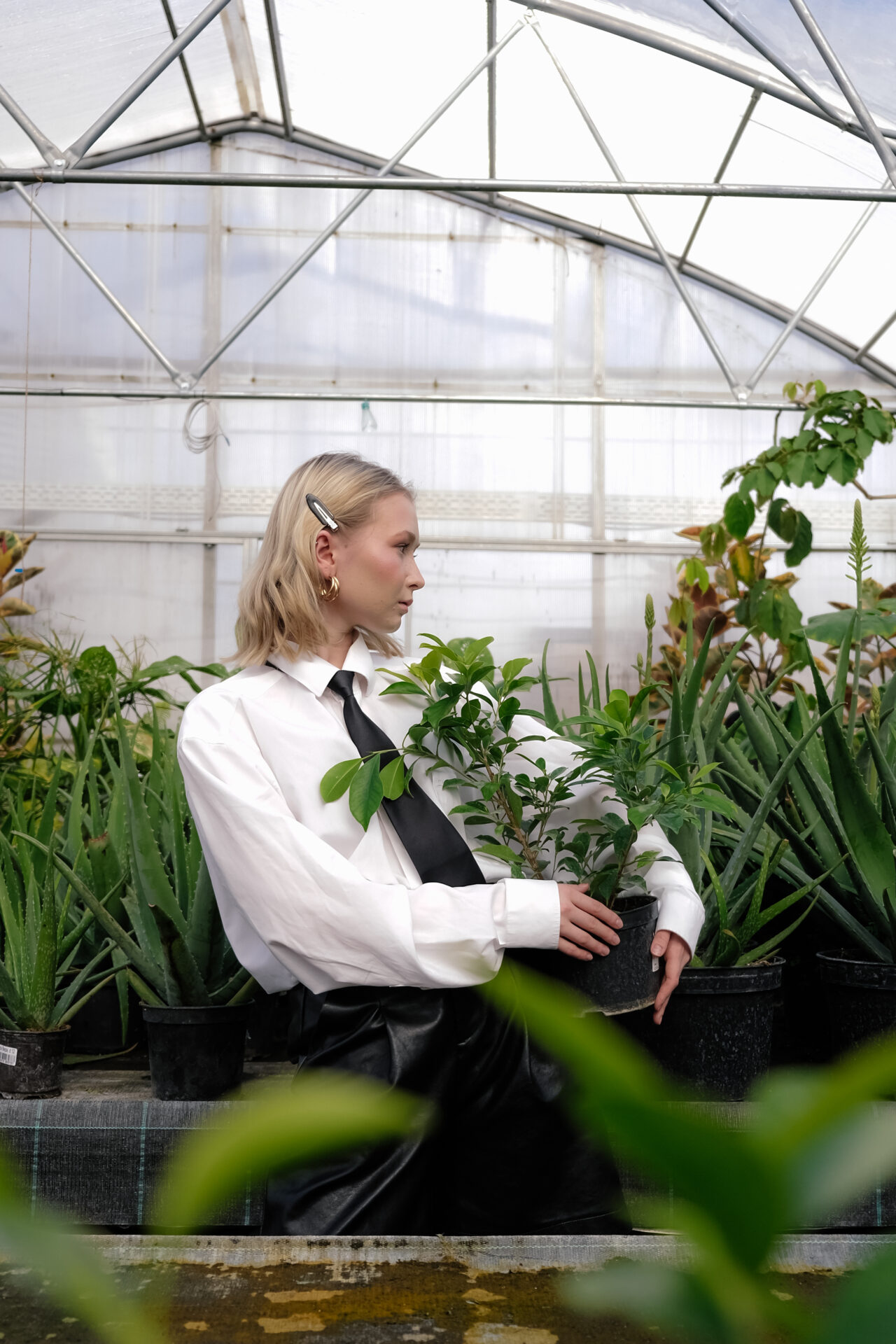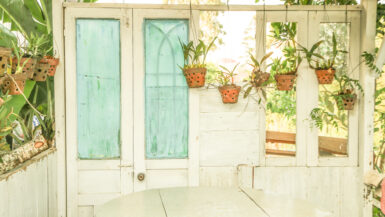Indoor vertical gardening has become increasingly popular as an innovative and space-saving solution for gardening enthusiasts with limited space or those who want to enhance their interior design with living greenery.
In this article, we will explore the top 10 well-suited plants for indoor vertical gardens and offer a range of benefits, such as air purification, ease of maintenance, and visual appeal. Whether you are a seasoned gardener or a beginner looking to dive into this eco-friendly trend, our curated list of plants will provide the essential information to create a thriving and aesthetically pleasing indoor vertical garden.
Join us as we unveil the remarkable world of vertical gardening and discover the plants that will transform your indoor space into a lush, green sanctuary.
Nurturing Indoor Vertical Gardens for Year-Round Growth
Indoor vertical gardens offer a unique opportunity to enjoy the benefits of gardening all year, even during the colder months when outdoor gardening may not be an option. This section will explore essential tips and tricks to ensure your indoor vertical garden thrives throughout the year.
We will also discuss how to maintain your plants’ health and vitality and incorporate an array of plant species into your indoor vertical garden for a visually stunning and diverse display.
Maximizing Light Exposure for Optimal Growth
One critical element of a successful indoor vertical garden is providing adequate light for plants to grow and flourish. Consider positioning your vertical garden near a south—or east-facing window, where it can receive ample natural sunlight. If natural light is limited, you can supplement with full-spectrum grow lights that mimic sunlight to support your plants’ growth.
Proper Watering Techniques for Vertical Gardens
Vertical gardens may require slightly different watering techniques than traditional gardens. Due to their vertical orientation, water can quickly drain from the top to the bottom. Monitoring moisture levels and adjusting your watering schedule is essential to ensure that all plants receive adequate water. Be mindful of each plant’s specific watering requirements, as overwatering or underwatering can lead to unhealthy plants.
Maintaining Humidity Levels for Luscious Foliage
Indoor environments often have lower humidity levels than outdoors, harming some plants. Monitoring and adjusting humidity levels as needed is vital to maintaining a healthy indoor vertical garden. You can do this by placing a humidifier near your vertical garden, misting your plants regularly, or incorporating a self-watering system that maintains consistent moisture levels.
Regular Pruning and Grooming for a Tidy Garden
Regular pruning and grooming are essential to keeping your indoor vertical garden looking its best. Removing dead or yellowing leaves helps maintain the garden’s appearance and promotes healthy growth. Pruning also encourages bushier growth, ensuring your vertical garden maintains its lush, green appearance throughout the year.
Rotating and Rearranging Plants for a Dynamic Display
One of the many benefits of an indoor vertical garden is the ability to customize and rearrange your plants effortlessly. This allows you to create a dynamic and visually engaging display that evolves with the seasons. For example, if you have a kitchen vertical garden, you can rotate your herbs and edible plants, ensuring you always have a fresh supply of your favorite ingredients. To explore this topic, visit our Indoor Vertical Garden Ideas for the Kitchen Space article.
By following these essential tips and guidelines, you can create a thriving, year-round indoor vertical garden that is visually stunning and gives you a sense of accomplishment as you nurture your plants and watch them grow. Dedication and attention to detail allow you to create a beautiful and functional indoor vertical garden that brings the outdoors into your home, no matter the season.
Benefits of Edible Plants in Indoor Vertical Spaces
Incorporating edible plants into your indoor vertical garden offers an aesthetically pleasing display and provides a range of practical advantages that can enhance your overall gardening experience. This section will explore the numerous benefits of including edible plants in your indoor vertical garden, from promoting sustainable living to offering a convenient source of fresh ingredients for your culinary creations.
Fresh and Nutrient-Rich Ingredients at Your Fingertips
One of the most significant benefits of growing edible plants in your indoor vertical garden is access to fresh, nutrient-rich ingredients in your home. By cultivating your herbs, vegetables, and fruits, you can ensure that you consume produce free from harmful pesticides and grown in a controlled environment. This enhances the flavor of your meals and contributes to a healthier lifestyle.
Reducing Your Environmental Footprint
Growing edible plants in an indoor vertical garden contributes to sustainable living by minimizing the need for store-bought produce, which often comes with excessive packaging and transportation costs. By producing your food, you actively reduce your environmental footprint and support a more sustainable food system.
Boosting Mental Health and Well-Being
Nurturing edible plants in a vertical garden can be a therapeutic and rewarding experience that promotes mental well-being. Research has shown that gardening can help reduce stress, increase mindfulness, and provide a sense of accomplishment. As you watch your plants grow and flourish, you’ll experience the satisfaction of knowing that you played an essential role in their development.
Encouraging Creativity and Culinary Exploration
Having a variety of edible plants in your indoor vertical garden can inspire culinary creativity and experimentation. With various herbs, vegetables, and fruits, you’ll be more inclined to try new recipes and flavor combinations, expanding your culinary horizons and impressing your friends and family with your homegrown produce.
Maximizing Space and Enhancing Interior Design
Edible plants in indoor vertical gardens are functional and can be an attractive design element in your home. Vertical gardens are an innovative, space-saving solution that can transform a blank wall into a vibrant, living piece of art. Moreover, incorporating edible plants adds visual interest and practicality to your indoor green space.
In summary, incorporating edible plants into your indoor vertical garden offers many benefits, from promoting sustainable living practices to providing fresh, nutrient-rich ingredients for your culinary endeavors. As you explore the world of edible plants, you’ll enhance your indoor space’s visual appeal and contribute to a healthier and more environmentally conscious lifestyle.
Enhancing Air Quality with Plants for Indoor Vertical Gardens
Indoor vertical gardens provide stunning visual appeal and space-saving solutions and serve as natural air purifiers, improving the air quality within your home. By incorporating specific air-purifying plants into your indoor vertical garden, you can reap the benefits of cleaner, fresher air while enjoying the beauty of your living wall. In this subsection, we will delve into the importance of air-purifying plants and highlight some top contenders for enhancing the air quality within your indoor vertical garden.
The Role of Plants in Purifying Indoor Air
Plants are natural air filters, absorbing harmful pollutants and toxins commonly found in indoor environments, such as formaldehyde, benzene, and ammonia. Through photosynthesis, plants convert carbon dioxide into oxygen, providing fresh, breathable air within your living space. Moreover, certain plants are known for their exceptional air-purifying abilities, making them ideal candidates for your indoor vertical garden.
Top Air-Purifying Plants for Indoor Vertical Gardens
1. Spider Plant (Chlorophytum comosum): Known for removing formaldehyde and benzene from the air, the spider plant is a low-maintenance and resilient option for your indoor vertical garden.
2. Snake Plant (Sansevieria trifasciata): This hardy and adaptable plant effectively purifies the air of formaldehyde, benzene, and xylene while releasing oxygen at night, making it an excellent choice for bedrooms.
3. Golden Pothos (Epipremnum aureum): With its attractive trailing vines, the golden pothos is an efficient air purifier known for removing formaldehyde, xylene, and benzene from the air.
4. Boston Fern (Nephrolepis exaltata): This lush fern is visually pleasing and excels at removing formaldehyde and xylene from the air, making it a valuable addition to your indoor vertical garden.
5. Peace Lily (Spathiphyllum spp.): A beautiful flowering plant, the peace lily helps to remove pollutants such as formaldehyde, benzene, and ammonia from the air while also increasing humidity levels, perfect for drier indoor environments.
Incorporating these air-purifying plants into your indoor vertical garden can enhance the overall air quality within your living space while creating a visually stunning display. Combining cleaner air and a thriving, lush garden will provide a healthier and more comfortable indoor environment for you and your loved ones.
Choosing Low-Maintenance Plants for Indoor Vertical Gardens
Selecting low-maintenance plants for your indoor vertical garden is an excellent way to ensure a thriving, lush display with minimal effort. These plants require less attention and are generally more resilient and adaptable to indoor conditions, making them ideal choices for busy individuals or those new to gardening. This subsection will explore some of the best low-maintenance plants for indoor vertical gardens and discuss the benefits of incorporating them into your green space.
Effortless Greenery for a Stunning Vertical Display
1. ZZ Plant (Zamioculcas zamiifolia): Tolerant of low light and inconsistent watering, the ZZ plant is an excellent addition to any indoor vertical garden. Its glossy, dark green leaves create a stunning visual contrast against the vertical structure.
2. English Ivy (Hedera helix): Known for its air-purifying abilities and classic trailing vines, English Ivy is a low-maintenance option that adds texture and visual interest to your vertical garden.
3. Heartleaf Philodendron (Philodendron hederaceum): This attractive, easy-to-grow plant features heart-shaped leaves and adapts well to various light conditions. Its trailing growth habit makes it an ideal choice for a vertical garden.
4. Pothos (Epipremnum aureum): As mentioned earlier, pothos is not only an excellent air purifier but also a low-maintenance plant that thrives in various lighting conditions. Its cascading vines create a lush, green waterfall effect in your vertical garden.
5. Cast Iron Plant (Aspidistra elatior): True to its name, the cast iron plant is incredibly resilient and can withstand poor lighting, irregular watering, and temperature fluctuations, making it an easy-care option for your indoor vertical garden.
Benefits of Opting for Low-Maintenance Plants for Indoor Vertical Gardens
Reduced Stress and Time Commitment: Choosing low-maintenance plants for your indoor vertical garden can significantly reduce the time and effort required to maintain a thriving green space. This allows you to enjoy the beauty and benefits of your garden without the added stress of constant care and maintenance.
Greater Success for Beginner Gardeners: If you are new to gardening or have had limited success with plants, opting for low-maintenance varieties can help boost your confidence and increase the likelihood of a successful and rewarding gardening experience.
Adaptability to Indoor Environments: Low-maintenance plants are generally more adaptable to indoor conditions, which means they are more likely to thrive in your vertical garden despite the challenges of limited light, fluctuating temperatures, or inconsistent watering.
Visual Impact with Minimal Effort: Incorporating low-maintenance plants into your indoor vertical garden allows you to create a visually stunning display that requires minimal effort, making it an ideal choice for those with busy lifestyles or limited time to dedicate to gardening.
When curating your indoor vertical garden, selecting low-maintenance plants can help ensure a lush, thriving display with minimal effort. These resilient and adaptable plants add visual interest and create a more enjoyable and stress-free gardening experience. So, go ahead and create your beautiful indoor green oasis with these low-maintenance plant options, and revel in the benefits they bring to your living space.
Aesthetic Appeal of Indoor Vertical Garden Plants
Designing an indoor vertical garden involves choosing plants that are easy to care for and beneficial to air quality, as well as visually appealing plants that enhance the overall aesthetics of your living space. This subsection will explore some of the most stunning and eye-catching plants that can take your indoor vertical garden to the next level. From vibrant foliage to unique textures, these plants will create a captivating visual display while offering various benefits to your indoor environment.
Creating a Colorful Canvas with Vibrant Foliage
1. Calathea (Calathea spp.): Known for its strikingly patterned leaves, calathea plants add a touch of color and visual interest to your vertical garden. With various species to choose from, you can create a stunning display of contrasting colors and patterns.
2. Croton (Codiaeum variegatum): Crotons with bold, colorful leaves in shades of red, yellow, orange, and green add a vibrant pop of color to your indoor vertical garden. They thrive in bright, indirect light and help create a tropical atmosphere.
3. Chinese Evergreen (Aglaonema spp.): With its stunning variegated leaves in shades of green, silver, and red, Chinese evergreen plants add a touch of elegance and sophistication to your vertical garden. They are also known for their air-purifying capabilities and adaptability to various light conditions.
Introducing Visual Depth and Texture with Unique Plant Forms
4. Ferns (various species): Ferns offer a variety of textures and growth habits, making them an excellent choice for adding depth and visual interest to your indoor vertical garden. From delicate maidenhair ferns to the lush Boston fern, there’s a fern to suit every aesthetic preference.
5. Air Plants (Tillandsia spp.): These unique, soil-less plants can be incorporated into your indoor vertical garden to create a visually intriguing display. Their fascinating growth habits and diverse shapes add an element of surprise and whimsy to your green wall.
6. String of Pearls (Senecio rowleyanus): This eye-catching succulent features cascading strings of round, bead-like leaves, adding a distinctive touch to your indoor vertical garden. Its trailing growth habit makes it an ideal plant for creating a lush, cascading effect.
Enhancing Visual Appeal with Blooming Beauties
7. Orchids (Orchidaceae family): Orchids are renowned for their stunning flowers and elegant appearance, making them a perfect addition to your indoor vertical garden. While some orchids can be more challenging, many beginner-friendly species can thrive in a vertical garden setup.
8. Flamingo Flower (Anthurium andraeanum): With its glossy, heart-shaped leaves and vibrant, long-lasting flowers, the flamingo flower adds a touch of tropical flair and color to your indoor vertical garden. This plant also helps purify the air and prefers bright, indirect light.
9. Bromeliads (Bromeliaceae family): These exotic plants offer a visually stunning display with their unique foliage and vibrant flower bracts. Bromeliads are well-suited for vertical gardens, as they naturally grow on trees in their native habitats, making them an excellent choice for creating a dramatic and colorful living wall.
By incorporating these visually appealing plants into your indoor vertical garden, you can create a mesmerizing display that enhances the aesthetics of your living space and provides a sense of accomplishment and satisfaction as you watch your garden flourish.
With careful selection and thoughtful design, your indoor vertical garden can become a living work of art that reflects your style and transforms your space into a lush green sanctuary.







Leave a reply